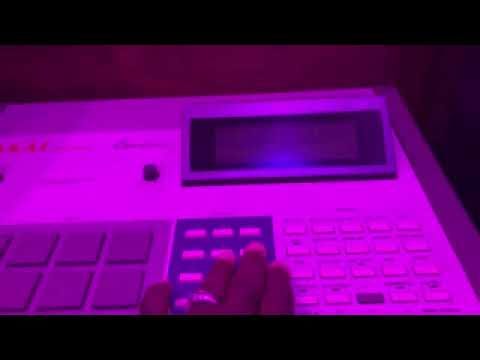What’s up Forum!
Everyone has been talking about the sound quality of the original MPC vs the newer ones..
Especially the MPC3000
or at least a few months ago..
While I agree that each of these devices had a certain sonic character,
I’d also like to mention that a majority of the character we listen to happen in the post-production process.
take a listen to the original beat by Rodney Jerkins for Brandy’s “The boy is mine”
You can hear how basic and raw that sounds..
A majority of what is produced on these devices sounds like EXACTLY like this..
But when WE hear it..
it sounds like this :
Notice how punchy the drums are, and mainly the filtering on the bassline?
A majority of the production work on this record was done by Rodney Jerkis and his production team at record one studios in LA.
Im sure they had a few fairly decent compressors that could have accommodated the team.
We often talk about the sound of the machine as if we’re listening to that when we listen to the records we love..
But in fact, we’re listening to the end result of the efforts of a handful of professional musicians and engineers producing a product that translates well on multiple listening experiences.
One machine cannot be responsible for that lol.. (what about the SSL sound?)
I agree the MPC definitely hits hard, especially when programming drums,
But let’s look at what happens in the actual production process, or at least the ‘throwback’ one.
I want you to look at this video of legendary producer Brian Micheal Cox.
He’s programmed on an MPC3k.. and chopped samples to fit..
nowhere is he talking about the ‘sound’ of this machine..
in fact, he’s struggling a bit to get the loop just right..
wanna know why?
Back then ESPECIALLY on Roger Linn MPCs
It was almost IMPOSSIBLE for an inexperienced user to get a good loop.
it took some real skill..
or some real knowledge of the machine
especially since on the 3k you weren’t working with waveforms. instead numbers.
So your chops had to be on point. OR at least musical enough to be convincing..
that was part of the magic/mystery of producers… was HOW was this done..
(trust me Im going somewhere with this)
Or consider if you were working with a sample that was created in the 1960’s OR someone playing live…..
back in the day*
Quantizing your drums would be foolish as the samples didnt always align with perfect timing.
So if you were sampling back then, quantizing everything on sample based tracks wasn’t wise.. it just made things sound clunky..
OR perhaps IF they were on the grid, they werent always perfect chops on the transients.. they might have been chopped in a away that just made the loop work using another musical element.
Then adding drums on that would fit to where the drums either lie in the sample
OR of course another rhythmic timing.
Some of this came as a workaround due to drums interfering with the mix
So moving them around until they stacked helped add punch.. as you’re just stacking frequencies/harmonics.
you had to use your ear to get rid of that double kick and get the right ‘thwack’
BOOM, the beat bumps are different because not just the converters are different, but your entire process of getting a good-sounding kick and bassline or kick and sample is different.
if anything its kind of ‘sloppy’ But the MPC could handle that well and musically.
well at least the drum programming,
Back then mixing and recording vocals had to be done on another system..
i know that most hip hop records from the 1990s were mixed at D&D studios on a MCI console and a Sony 2" 24 track tape machine…..
Perhaps, if you want that ‘old school’ feel. Try emulating the process.
The meticulous process of nudging notes and avoiding quantization
using your ears and not the screen..
It’s a little different and challenging..
BUT
When the track comes out, its rewarding.. You LOVE listening to it because of the process..
Because YOU just made that sound good…
the machine just helped..






